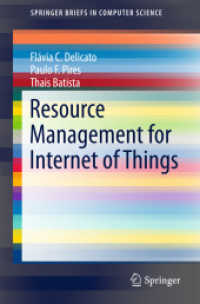Full Description
This new fifth edition of Instructional Models for Physical Education provides pedagogical knowledge and resources that support physical education teachers' selection and use of instructional models and gives physical educators a plan for incorporating these models into their teaching.
Presented in two sections, Instructional Models for Physical Education first presents the rationale, pedagogical knowledge, and selection processes for Model-Based Instruction (MBI). MBI is the commitment to use one instructional plan throughout a unit of instruction. The second section provides pedagogical knowledge for the selection, implementation and assessment of instructional models used in P-12 physical education.
This new edition has been updated to be in alignment with the 2024 SHAPE America National Standards for Physical Education, refreshed throughout, providing significant updates and new additions designed to enhance the book's utility and relevance for contemporary physical education programs including a new chapter examining Innovation in Model-Based Instruction.
Contents
Part 1: Foundations for Model-Based Instruction in Physical Education 1. Aligning Standards, Curriculum, and Instruction with Model-Based Instruction 2. Describing Instructional Models for Physical Education 3. Areas of Knowledge for Model-Based Instruction in Physical Education 4. Teaching Strategies for Model-Based Instruction 5. Effective Teaching Skills for Model-Based Instruction 6. Planning and Assessing for Model-Based Instruction Part 2: Eight Instructional Models for Physical Education 7. Direct Instruction: Teacher as Instructional Leader 8. Personalized System for Instruction: Students Progress as Fast as They Can or as Slowly as They Need 9. Cooperative Learning: Students Learning With, By, and For Each Other 10. Sport Education: Learning to Become Competent, Literate, and Enthusiastic Sportspersons 11. Peer Teaching: "I Teach You, Then You Teach Me" 12. Inquiry Teaching: Learner as Problem Solver 13. Tactical Games: Teaching Games for Understanding 14. Teaching Personal and Social Responsibility: Integration, Transfer, Empowerment, and Teacher-Student Relationships 15. Hybridizing Instructional Models: Coherence, Alignment, and Innovation








